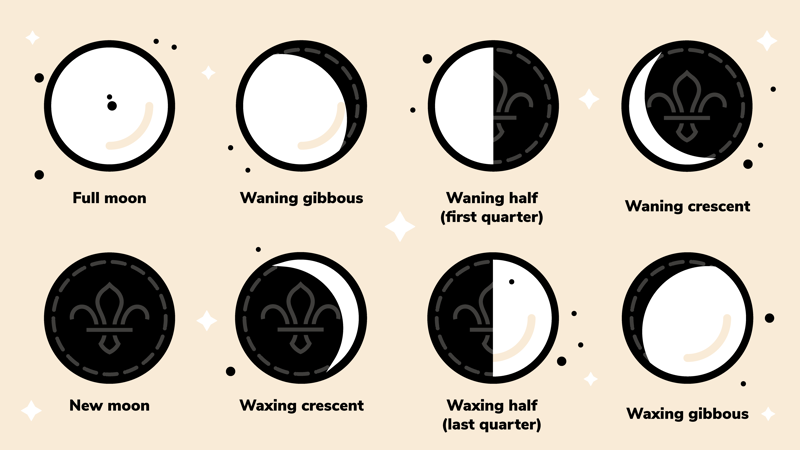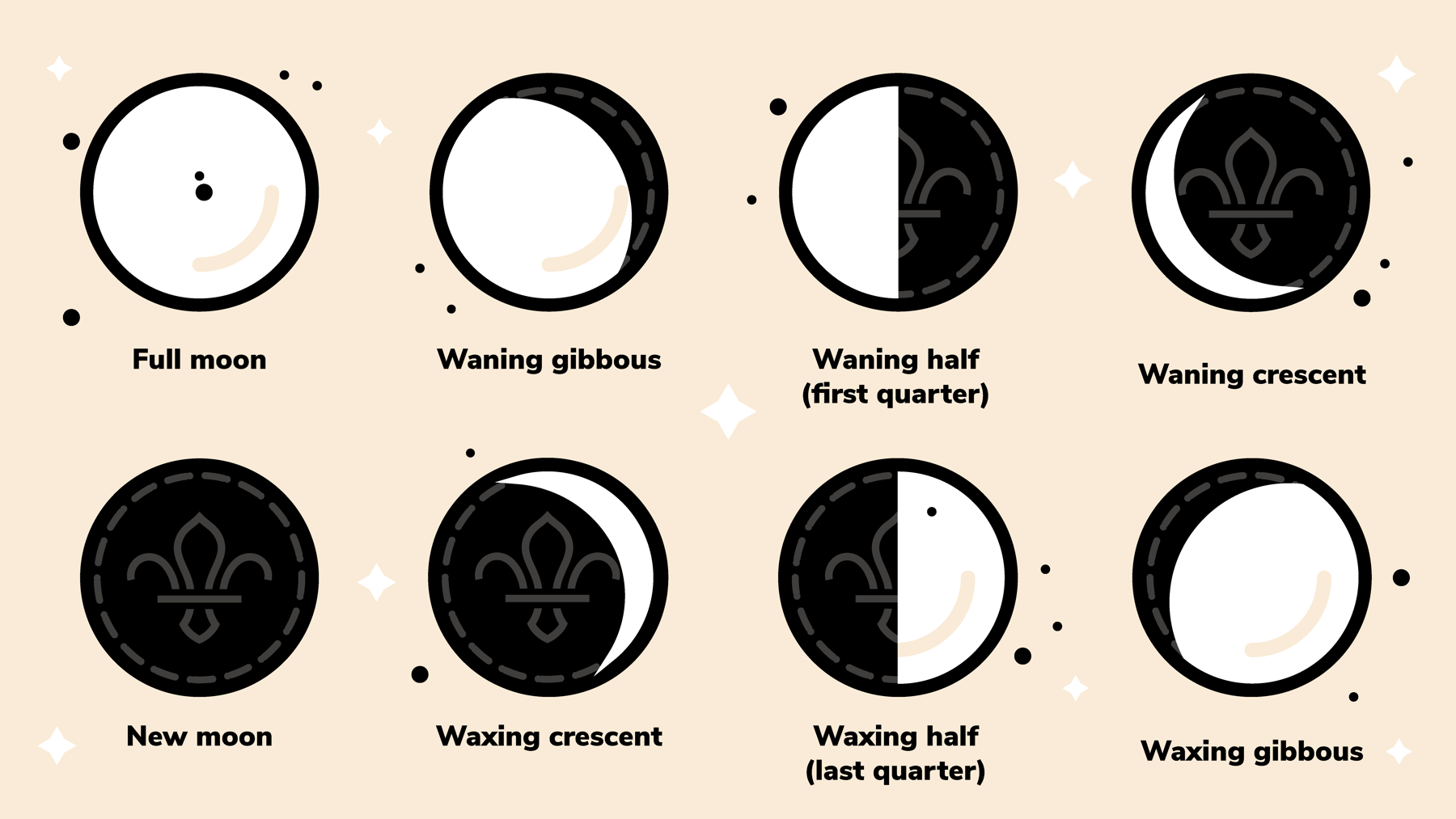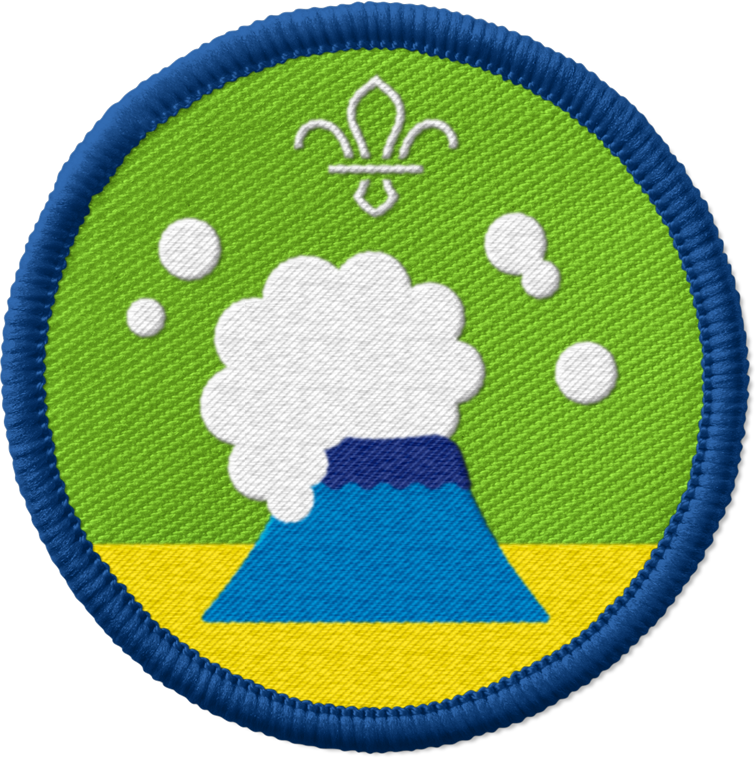
Mystic biscuit moons
You’ll need
- Spoons
- At least one cream filled biscuit for each person (such as an Oreo cookie, Golden Crunch Cream, or any similar alternative)

Observe the Moon
- It’s best to observe the Moon on a clear night, when there’s little cloud to get in the way.
- The best way to observe the Moon is with a telescope or a pair of binoculars, but if you don’t have access to these you can still see a lot with the naked eye.
- Unless there’s an eclipse, it’s safe to look straight at the Moon.
Create the Moon
- Everyone should wash their hands.
- Give everyone a cream filled biscuit.
- Everyone should split their biscuit in half – the easiest way to do this is by gently twisting them apart.
- Everyone should get rid of the half of the biscuit with the least cream filling on – they may find that eating it is the best way to do this!
- Everyone should take the remaining half of their biscuit, and use the end of a spoon to make the cream filling look like the Moon they saw. What shape does it need to be? What about the texture?
- Once everyone’s made and compared their biscuit Moons, they can eat them.
- If you have enough biscuits, you could repeat the activity in pairs. Everyone should choose a phase of the Moon, then make their biscuit look like that phase. Then, everyone should name the phase their partner has created, before eating their second Moon.
Did you know that of the 12 men who have walked on the Moon, 11 were Scouts?
What is the Moon?
- The Moon is thought to be 4.5 billion years old.
- Most scientists think that the Moon was created when a big object collided with Earth. The collision caused chunks of Earth to be thrown out into space. Over time, the chunks of Earth joined together to form the Moon.
- Unlike the Sun, the Moon doesn’t create any light. Moonlight is just sunlight reflecting on the Moon’s surface.
- Usually the Moon is a greyish-white, but it can change colour. Red Moons are caused by a lunar eclipse (when the Earth moves between the Sun and the Moon, so the sunlight to the Moon). Dust, pollution, or volcanic ash can cause the Moon to appear orange or even blue.
- The Moon controls the tides – the waves in the sea these are caused by the Moon.
What does it look like?
- The surface of the Moon is rough and uneven. It’s covered in craters, lava plains, mountains, and pits, caused by rocks hitting its surface over many years.
- You might be able to see large dark patches on the Moon’s surface. Sometimes these are called the ‘seas of the Moon’. They aren’t full of water, though – they’re actually large pools of frozen lava.
What are the phases of the Moon?
The Moon is always changing; but don't worry, it's just a phase it's going through. As the Moon orbits the Earth, we see a different amount of the Moon reflecting the Sun’s light. This means the Moon looks like it’s changing shapes, even though it’s always a ball shape. The different stages are called phases.
It takes 29.5 days for the moon to go through the eight key stages and complete a lunar cycle. The terms used to describe different phases of the Moon include:
- Waxing (when the Moon appears to be growing in size)
- Waning (when the Moon appears to be shrinking)
- Gibbous (when more than half of the Moon is illuminated)
Reflection
This activity helped you to value the outdoors. Did you enjoy being outside at night to observe the Moon? How was it different to being outside in the daytime? Where did you go to look at the night sky? Was there lots of light pollution? Could you see anything else in the sky, apart from the moon? Would you like to look at the night sky again?
This activity may also have been a chance for you to try new things. Had you ever looked at the night sky before? How did you feel before you went outside to look? Did you expect to enjoy it? What was it like when you gave it a go? Was it what you expected? Would you like to try it again, maybe in a different place?"
Safety
All activities must be safely managed. You must complete a thorough risk assessment and take appropriate steps to reduce risk. Use the safety checklist to help you plan and risk assess your activity. Always get approval for the activity, and have suitable supervision and an InTouch process.
- Food
Remember to check for allergies, eating problems, fasting or dietary requirements and adjust the recipe as needed. Make sure you’ve suitable areas for storing and preparing food and avoid cross contamination of different foods. Take a look at our guidance on food safety and hygiene.
If you’re not able to look at the Moon together, everyone should try to look at the Moon in between meetings - make sure parents and carers are aware that people will be trying to do this.
Many shops sell ‘free from’ cream filled biscuits, which are perfect for anyone who needs their biscuits to be gluten free, or free from traces of milk and egg.
If you can’t get cream filled biscuits to meet everyone’s dietary requirements, people could nibble any other suitable biscuit until it’s the right shape for the phase of the moon they’re trying to create.
All Scout activities should be inclusive and accessible.



